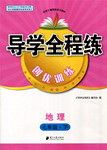题目内容
—What can I do for you, Madam?
—Which of the three cameras is ________, may I ask?
A. more expensive B. the more expensive
C. the most expensive D. most expensive
C

练习册系列答案
 导学全程练创优训练系列答案
导学全程练创优训练系列答案
相关题目
题目内容
—What can I do for you, Madam?
—Which of the three cameras is ________, may I ask?
A. more expensive B. the more expensive
C. the most expensive D. most expensive
C

 导学全程练创优训练系列答案
导学全程练创优训练系列答案